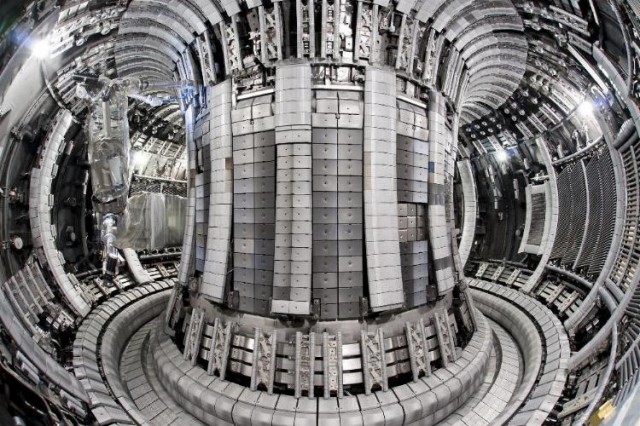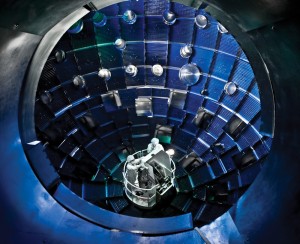Clean, limitless fusion power could arrive sooner than expected Share This article
Share This articleGood
news, denizens of Earth: If the findings from two premier research labs
are to be believed, commercial nuclear fusion is feasible — and could
arrive sooner than expected.
The first breakthrough comes from Sandia National Laboratories (the same engineers who brought us
the fanless heatsink).
At SNL, a research team has been working on a new way of creating
fusion called magnetized liner inertial fusion (MagLIF). This approach
is quite similar to the National Ignition Facility at the LLNL in
California, where they fuse deuterium and tritium (hydrogen isotopes) by
crushing and heating the fuel with
500 trillion watts of laser power.
Instead of lasers, MagLIF uses a massive magnetic pulse (26 million
amps), created by Sandia’s Z Machine (a huge X-ray generator), to crush a
small cylinder containing the hydrogen fuel. Through various
optimizations, the researchers discovered a MagLIF setup that
almost breaks even (i.e. it almost produces more thermal energy than the electrical energy required to begin the fusion reaction).
Probably
more significant is news from the Joint European Torus (JET), a
magnetic confinement fusion facility in the UK. JET is very similar to
the ITER nuclear fusion reactor, an international project which is being
built in the south of France. Whereas NIF and Sandia create an
instantaneous fusion reaction using heat and pressure, ITER and JET
confine the fusing plasma for a much longer duration using strong
magnetic fields, and are thus more inclined towards the steady
production of electricity. JET’s breakthrough was the installation of
a new beryllium-lined wall and tungsten floor inside the
tokamak — the doughnut-shaped inner vessel that confines 11-million-degrees-Celsius plasma (pictured above).
Carbon
is the conventional tokamak lining (and the lining that had been chosen
for the first iteration of ITER) but now it seems the
beryllium-tungsten combo significantly improves the quality of the
plasma. Hopefully this information will allow ITER to skip the carbon
tokamak and jump straight to beryllium-tungsten, shaving years and
millions of dollars off the project.

Moving
forward, JET will actually try full-blown fusion with the optimum mix
of deuterium and tritium (16 megawatts, for less than a second). At this
point, JET is practically an ITER testbed, so its results from the next
year or two will have a large impact on the construction of ITER’s
tokamak, which should be completed by 2019.
Before today, magnetic
confinement fusion was generally considered to be more mature and
efficient than inertial confinement fusion — but Sandia’s new approach
might change that. ITER is one of the world’s largest ongoing
engineering projects (it’s expected to cost around $20 billion), and yet
critics are quick to point out that we still don’t know if it will
actually work. ITER isn’t expected to fuse D-T fuel until 2027
(producing 500 megawatts for up to 1,000 seconds) — and an awful lot can
happen in 15 years. Still, the main thing is that we’re actually
working on
fusion power — when we’re talking about limitless, clean power, it’s
probably worth investing a few billion dollars, even if it doesn’t work
out.
Fusion reactors are some of the most beautiful constructions you’ll ever see, so be sure to check out our galleries of
the National Ignition Facility and
the Princeton Plasma Physics Lab.
Source:-
http://www.extremetech.com/extreme/137520-clean-limitless-fusion-power-could-arrive-sooner-than-expected 